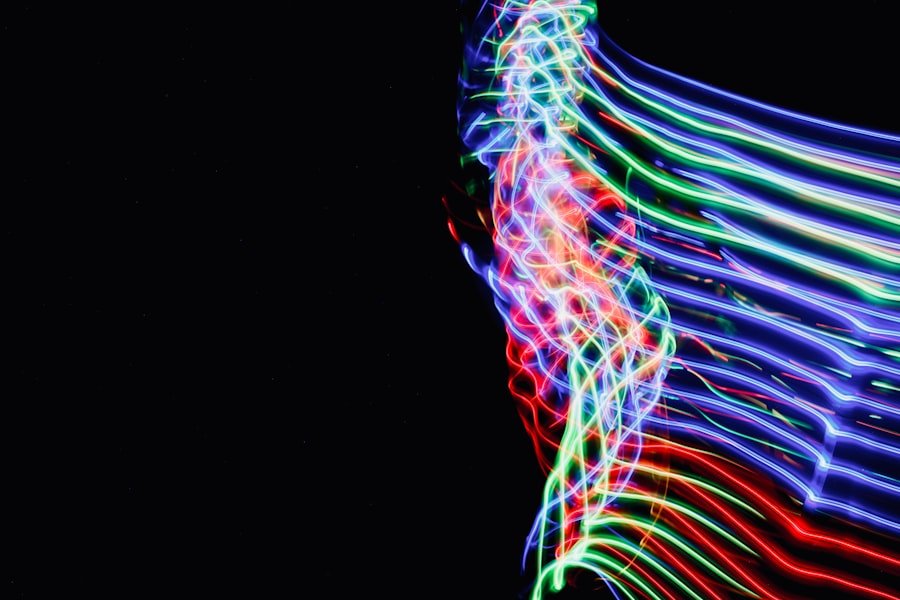The spine is a complex structure that plays a crucial role in our overall health and mobility. It consists of vertebrae, ligaments, muscles, and intervertebral discs that work together to provide support, flexibility, and protection for the spinal cord. Among the various issues that can affect the spine, spinal disc problems are particularly common and can lead to significant discomfort and impairment.
Two of the most frequently encountered conditions are bulging discs and herniated discs. Understanding these conditions is essential for anyone experiencing back pain or related symptoms, as they can impact daily life and overall well-being. Spinal discs serve as cushions between the vertebrae, absorbing shock and allowing for movement.
However, factors such as age, injury, and repetitive strain can lead to degeneration or displacement of these discs. When a disc bulges or herniates, it can press on nearby nerves, resulting in pain, numbness, or weakness in various parts of the body. This article will delve into the specifics of bulging and herniated discs, including their definitions, symptoms, diagnostic methods, treatment options, and the key differences between the two conditions.
By gaining a deeper understanding of these spinal issues, individuals can make informed decisions about their health and seek appropriate medical care. I highly recommend visiting an Orthopedic Spine Surgeon for your back pain.
Key Takeaways
- Spinal disc issues can cause a range of symptoms and discomfort, impacting daily life and mobility.
- A bulging disc occurs when the outer layer of the disc weakens and bulges out, potentially pressing on nearby nerves.
- A herniated disc happens when the inner gel-like material of the disc leaks out through a crack in the outer layer, leading to nerve compression and pain.
- Symptoms of a bulging disc may include localized pain, numbness, tingling, and weakness in the affected area.
- Symptoms of a herniated disc can include radiating pain, muscle weakness, numbness, and tingling that may extend into the arms or legs.
What is a Bulging Disc?
What is a Bulging Disc?
Unlike a herniated disc, where the inner gel-like substance of the disc leaks out, a bulging disc typically retains its integrity but expands outward. This condition can occur in any part of the spine but is most commonly found in the lumbar (lower back) and cervical (neck) regions.
Causes and Symptoms
Bulging discs are often associated with age-related degeneration, as the discs lose hydration and elasticity over time.
Diagnosis and Treatment
In some cases, a bulging disc may be discovered incidentally during imaging studies for unrelated issues. Understanding the nature of a bulging disc is essential for determining the appropriate course of action for treatment and management.
What is a Herniated Disc?

A herniated disc is a more severe condition than a bulging disc and occurs when the inner gel-like material of the disc, known as the nucleus pulposus, breaks through the outer layer (annulus fibrosus) due to injury or degeneration. This rupture can lead to direct pressure on nearby spinal nerves or the spinal cord itself. Herniated discs are often referred to as “slipped” or “ruptured” discs and can occur in any region of the spine, although they are most prevalent in the lumbar and cervical areas.
The causes of herniated discs can vary widely, ranging from acute injuries such as falls or heavy lifting to chronic wear and tear associated with aging. The symptoms experienced by individuals with herniated discs can be more pronounced than those with bulging discs due to the potential for nerve compression. Understanding the mechanics of a herniated disc is vital for recognizing its implications on health and mobility and for determining effective treatment strategies.
Symptoms of a Bulging Disc
The symptoms associated with a bulging disc can vary significantly depending on its location and whether it is pressing on nearby nerves. Many individuals may remain asymptomatic, experiencing no pain or discomfort at all. However, when symptoms do occur, they may manifest as localized pain in the back or neck.
This discomfort may be exacerbated by certain movements or positions, such as bending or twisting. In cases where a bulging disc compresses spinal nerves, individuals may experience radiating pain that travels down an arm or leg, often referred to as radiculopathy. Other potential symptoms include tingling sensations, numbness, or muscle weakness in the affected areas.
It is important to note that while these symptoms can be indicative of a bulging disc, they may also overlap with other spinal conditions. Therefore, seeking medical evaluation is crucial for accurate diagnosis and appropriate management.
Symptoms of a Herniated Disc
The symptoms of a herniated disc can be more intense and debilitating compared to those associated with a bulging disc. Individuals may experience sharp or shooting pain that radiates along the path of the affected nerve. For example, a herniated disc in the lumbar region may cause pain that travels down the leg (sciatica), while one in the cervical region may lead to pain radiating into the shoulder or arm.
In addition to pain, individuals with herniated discs may experience numbness or tingling sensations in their extremities. Muscle weakness is also a common symptom; individuals may find it difficult to lift objects or perform everyday tasks due to compromised strength in their arms or legs. The severity of these symptoms can vary widely among individuals and may fluctuate over time.
Recognizing these signs is essential for seeking timely medical intervention and preventing further complications.
Diagnosis and Treatment for Bulging Disc

Diagnosing a bulging disc typically begins with a thorough medical history and physical examination conducted by a healthcare professional. During this evaluation, the physician will assess symptoms, range of motion, and any neurological deficits that may be present. Imaging studies such as MRI (magnetic resonance imaging) or CT (computed tomography) scans are often utilized to visualize the spine’s structure and confirm the presence of a bulging disc.
Treatment options for bulging discs generally start with conservative measures aimed at alleviating pain and improving function. These may include physical therapy, which focuses on strengthening core muscles and improving flexibility; medications such as nonsteroidal anti-inflammatory drugs (NSAIDs) to reduce inflammation; and lifestyle modifications like weight management and ergonomic adjustments at work. In cases where conservative treatments fail to provide relief after several weeks or months, more invasive options such as epidural steroid injections or minimally invasive surgical procedures may be considered.
Diagnosis and Treatment for Herniated Disc
The diagnostic process for a herniated disc is similar to that of a bulging disc but often involves more detailed imaging studies due to the potential severity of symptoms. A healthcare provider will conduct a comprehensive evaluation that includes assessing neurological function and identifying specific areas of weakness or sensory loss. MRI scans are particularly useful in visualizing herniated discs and determining their impact on surrounding structures.
Treatment for herniated discs often begins with conservative approaches aimed at managing pain and restoring function. These may include physical therapy focused on strengthening exercises and stretching techniques tailored to alleviate pressure on affected nerves. Medications such as NSAIDs or muscle relaxants may also be prescribed to help manage discomfort.
In cases where conservative treatments do not yield satisfactory results after several weeks or if neurological deficits worsen, surgical options such as discectomy (removal of the herniated portion of the disc) may be recommended to relieve pressure on nerves.
Understanding the Key Differences between Bulging and Herniated Discs
While both bulging and herniated discs involve displacement of intervertebral discs within the spine, there are key differences that set them apart. A bulging disc typically retains its outer layer’s integrity but protrudes outward due to degeneration or damage. In contrast, a herniated disc involves a rupture of this outer layer, allowing inner material to escape and potentially compress nearby nerves.
The symptoms associated with each condition also differ significantly; while bulging discs may cause localized pain or mild nerve compression symptoms, herniated discs often result in more severe pain radiating along nerve pathways accompanied by numbness or weakness in extremities. Additionally, treatment approaches may vary based on these distinctions; while many individuals with bulging discs find relief through conservative measures alone, those with herniated discs may require more aggressive interventions if symptoms persist. In conclusion, understanding spinal disc issues such as bulging and herniated discs is essential for anyone experiencing back pain or related symptoms.
By recognizing their differences in terms of definition, symptoms, diagnosis, and treatment options, individuals can make informed decisions about their health care needs. If you suspect you have a bulging or herniated disc, consulting with an experienced orthopedic spine surgeon like Dr. Jeffrey Moore can provide valuable insights into your condition and help you explore appropriate treatment options tailored to your unique situation.


